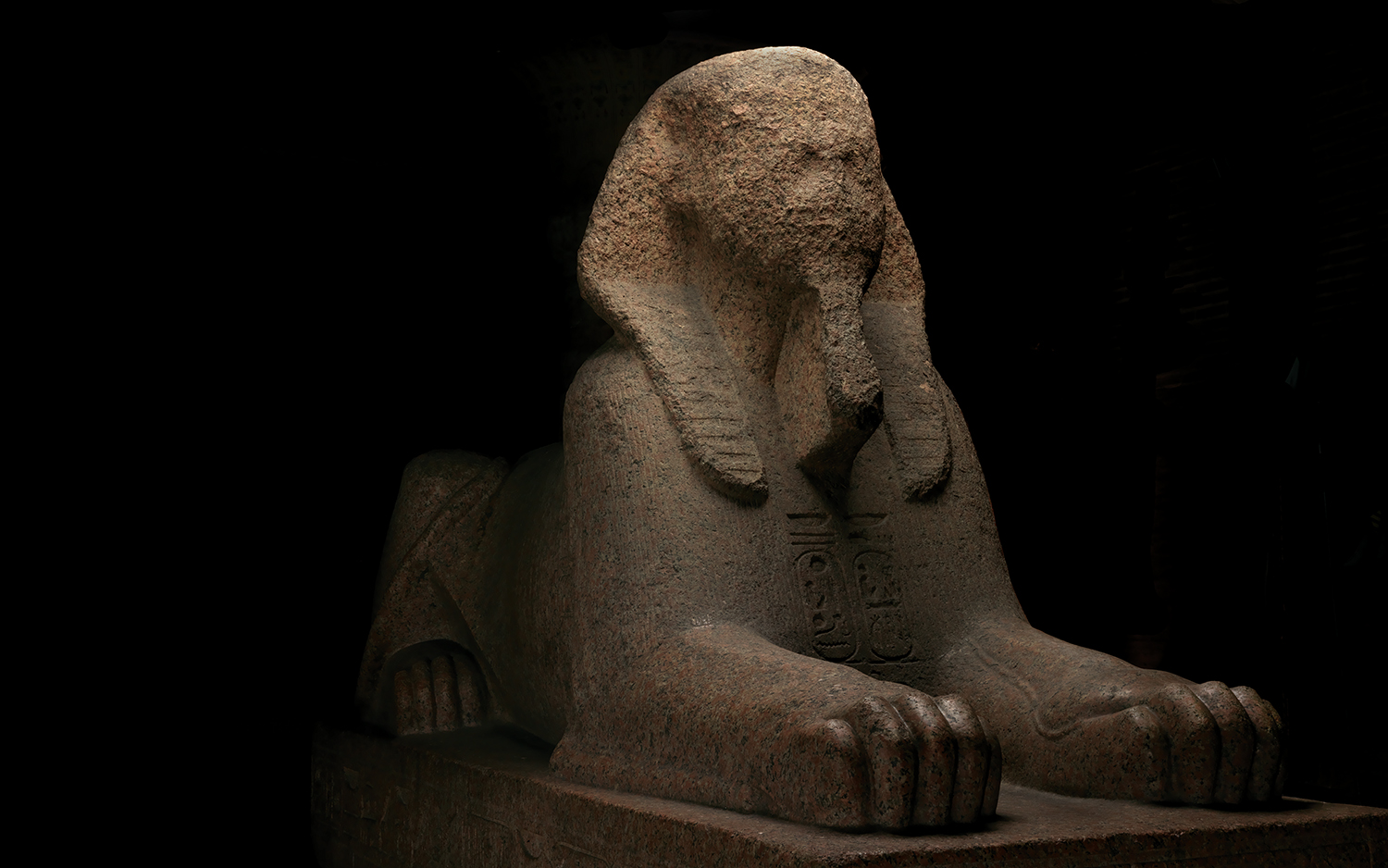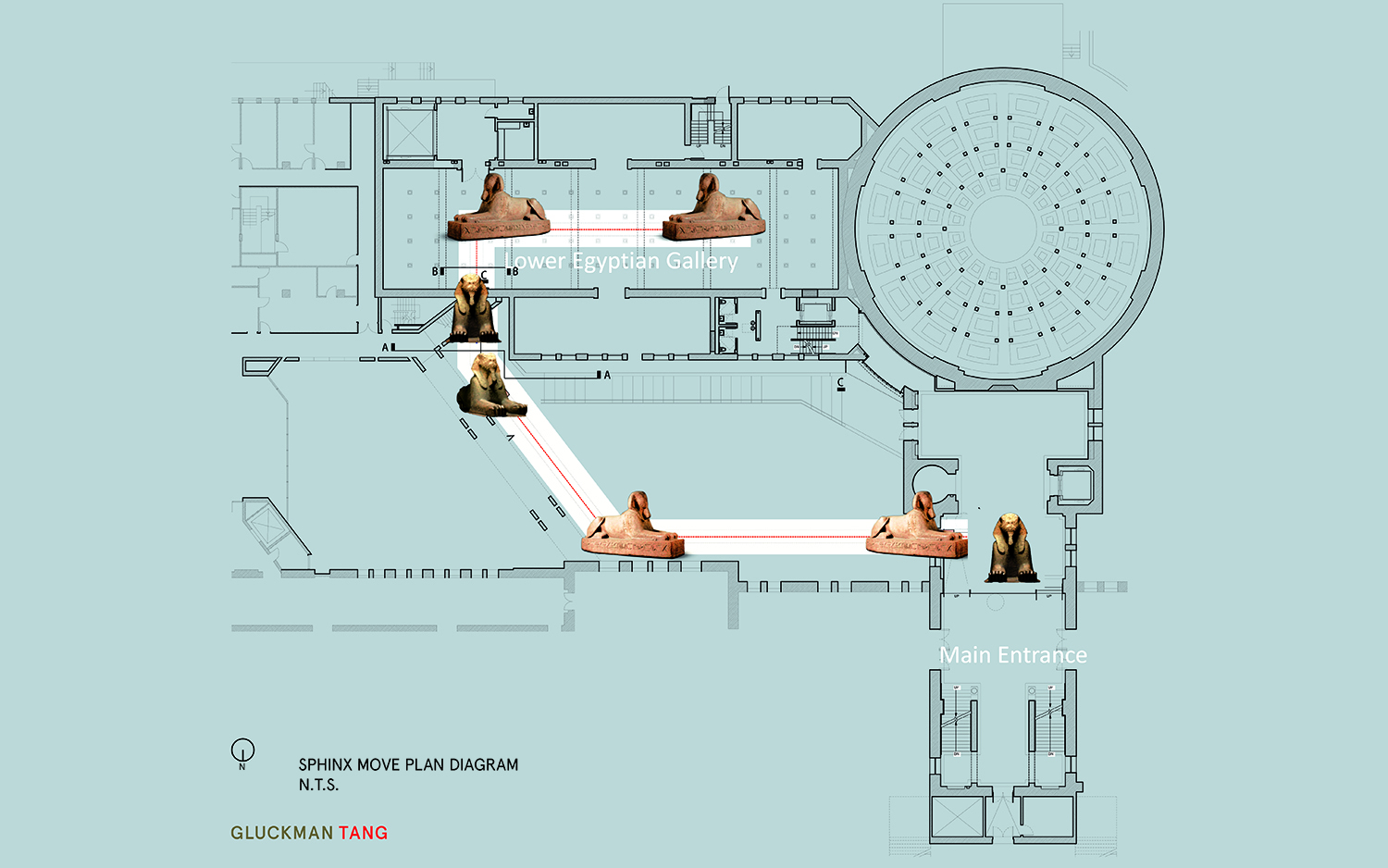Massive Sphinx of Ramses II Sees Daylight for First Time in Nearly 100 Years

An enormous stone sphinx representing the pharaoh Ramses II has spent nearly a century in the Egypt Gallery of the Penn Museum in Philadelphia. But today (June 12) the sphinx was relocated in "a monumental move" that saw the colossal statue "floating" on so-called air dollies — a technology that uses high-powered air compression in a manner similar to hoverboards, museum representatives said in a statement.
The sphinx's new location is in the museum's main entrance hall, where daylight will bathe the ancient statue for the first time since it arrived at the museum nearly a century ago.
The sphinx is more than 3,000 years old and weighs nearly 13 tons (11.8 metric tons). So, although its new home is only 250 feet (76 meters) from the spot where it has rested since 1926, the move posed unique challenges, museum representatives reported. [Photos: The Ram-Headed Sphinx of Gebel el-Silsila]
With its lion's body and human head, the red-granite sphinx represents the divine power of Ramses II. Though the head of the sphinx is heavily eroded, the body was buried in sand for thousands of years, which preserved much of the statue's original detail, according to the statement.
The sphinx was excavated from the Temple of the God Ptah at Memphis, Egypt, as a joint project between the Egyptian Antiquities Service, the Egypt Exploration Fund and the British School of Archaeology, and it sailed to the U.S. in 1913.

"Floating" a sphinx
How do you transport such an enormous object? Penn Museum staff first 3D-scanned the sphinx, to calculate its weight and density. Then, they collaborated with engineers to determine how to safely move it.
The team decided that, first, the sphinx would be lifted up by hydraulic gantries — a system for moving heavy loads. It would then be placed on four air dollies that would "float" the sphinx to nearby scaffolding, where hydraulic gantries would hoist the massive statue into position on a track, The Philadelphia Inquirer reported.
Sign up for the Live Science daily newsletter now
Get the world’s most fascinating discoveries delivered straight to your inbox.
Once on the track, the sphinx would be slowly and carefully nudged around a courtyard and through a window — with "inches to spare" — finally reaching its position in the museum's entry hall, according to the Inquirer. Video of the move, which was shared live on Facebook, demonstrated the painstaking slowness of the effort required to transport the hefty artifact.
- Photos: Mummies Discovered in Tombs in Ancient Egyptian City
- Photos: Teen's Skeleton Buried Next to Pyramid in Egypt
- Photos: Ancient Egyptian General's Tomb Discovered in Saqqara
Originally published on Live Science.

Mindy Weisberger is an editor at Scholastic and a former Live Science channel editor and senior writer. She has reported on general science, covering climate change, paleontology, biology and space. Mindy studied film at Columbia University; prior to Live Science she produced, wrote and directed media for the American Museum of Natural History in New York City. Her videos about dinosaurs, astrophysics, biodiversity and evolution appear in museums and science centers worldwide, earning awards such as the CINE Golden Eagle and the Communicator Award of Excellence. Her writing has also appeared in Scientific American, The Washington Post and How It Works Magazine. Her book "Rise of the Zombie Bugs: The Surprising Science of Parasitic Mind Control" will be published in spring 2025 by Johns Hopkins University Press.









